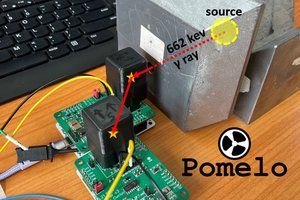Pomelo is really good at detecting and measuring gamma rays. But that doesn’t mean it won’t detect other types of ionizing radiation – it’s just that other types (like alphas or betas) have a hard time piercing through the scintillator packaging and getting measured. Cosmic muons, however, pierce through pretty much everything and deposit significant amounts of energy along their tracks.
Cosmic muons are created in the upper layers of the atmosphere when energetic space-travelling particles hit the matter that makes up our atmosphere. Lots of particles are created there, but most of them are very short-lived, except for muons that have a mean lifetime of about 2 microseconds. There’s an interesting discussion about relativity that explains why they reach the surface of the Earth; you can check that on the Wikipedia article on muons.
Oh, and there’s quite a lot of them – if you hold your palm out horizontally, there are 1-2 cosmic muons passing through it every second!
These particles have very high energy and pass through nearly everything, some of them passing through hundreds of meters of rock. For this reason, they’ve been used for some very cool applications, like taking a radiography of an entire Egyptian pyramid to discover new rooms inside.
Being high-energy charged particles, muons deposit energy all along their paths, leaving more energy in denser materials than in light ones. In Pomelo’s CsI(Tl) scintillator they leave about 9 MeV / cm of travel. This means that most cosmic muons detected by Pomelo will be outside the measurement range which is below 3 MeV. That is suggested by the shape of any background spectrum.

Typical background spectrum taken at my desk for ~70h
The right-most bin collects all events with energies overflowing the measurement range of the detector. In order to just measure muons, we need to use two detectors and just count the events where both detectors are in overflow. That confirms that something passed through both of them at the same time.
Setup
Two Pomelo Core boards are bolted together and wired up such that each one knows when the other fired. This is done by sharing each board’s local trigger with the other board, and each board checks for coincidences independently. The local trigger comes from an analog comparator on an RC-filtered version of the SiPM signal.
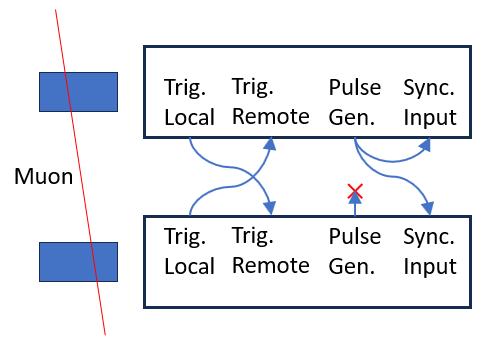
Wiring diagram for the two boards in coincidence
Trigger pulses are usually a few microseconds long. This works quite ok, but as the two boards check for coincidences independently, there can be edge cases where one board detects a coincidence that the other one misses. This causes misalignment of the two data streams, and since these measurements need to run for days, I generate a synchronization pulse every 5 seconds and inject it into both boards. This way if there’s a different number of physics pulses recorded between two synchronization pulses, I discard that chunk of data.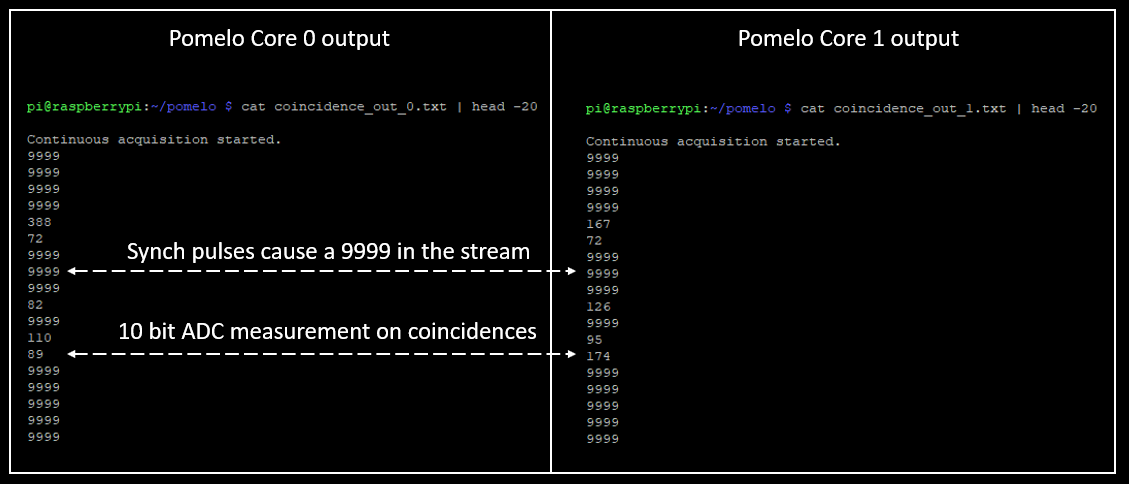
First lines of output data files. The 9999 entries are outside the ADC range and are injected into the data stream for each synchronization pulse
Most cosmic muons come in vertically, as the thickness of the atmosphere is lowest if you look straight up. As you start looking for muons at an angle there’s fewer of them because they need to travel longer from their point of creation. Some of them are attenuated away just by passing through matter, others decay before reaching the surface because of their short lifetime.
To measure how many muons reach the detector at different angles I printed supports that keep the detector tilted.

Printed supports keep the detector at 60 degrees with respect to the vertical direction
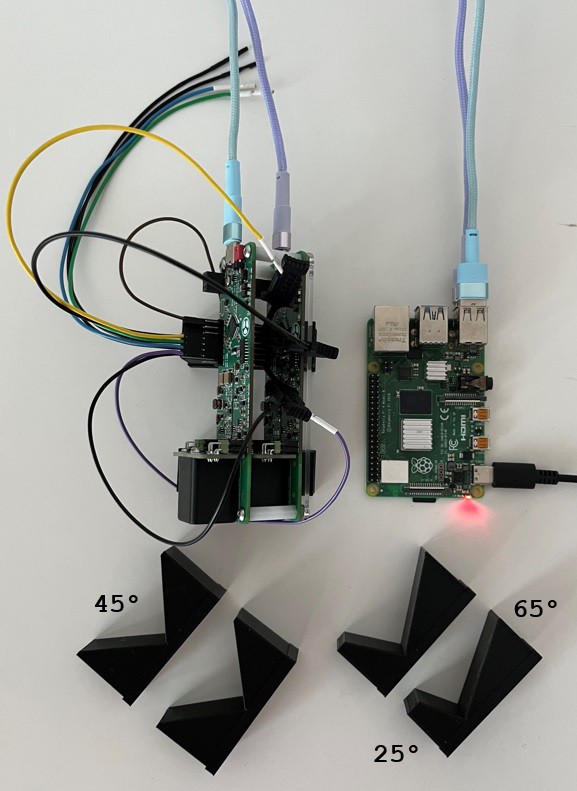
I printed supports to keep the detector at the following inclinations with respect to the vertical direction: 25, 30, 35, 45, 55, 60, 65, 90. 45 degrees and 25/65 degrees pictured here
Measurements
Long data taking runs were taken for about 2 weeks at different inclinations, recording all coincidences. Counting just the events where both detectors are...
Read more » mihai.cuciuc
mihai.cuciuc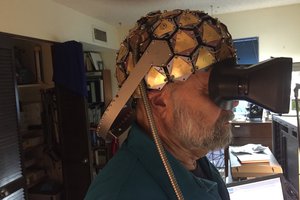
 Chuck Glasser
Chuck Glasser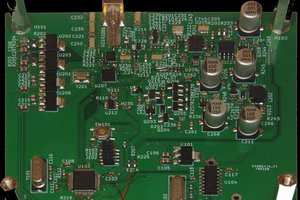
 MS-BOSS
MS-BOSS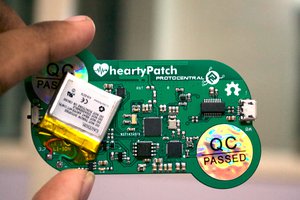
 Ashwin K Whitchurch
Ashwin K Whitchurch